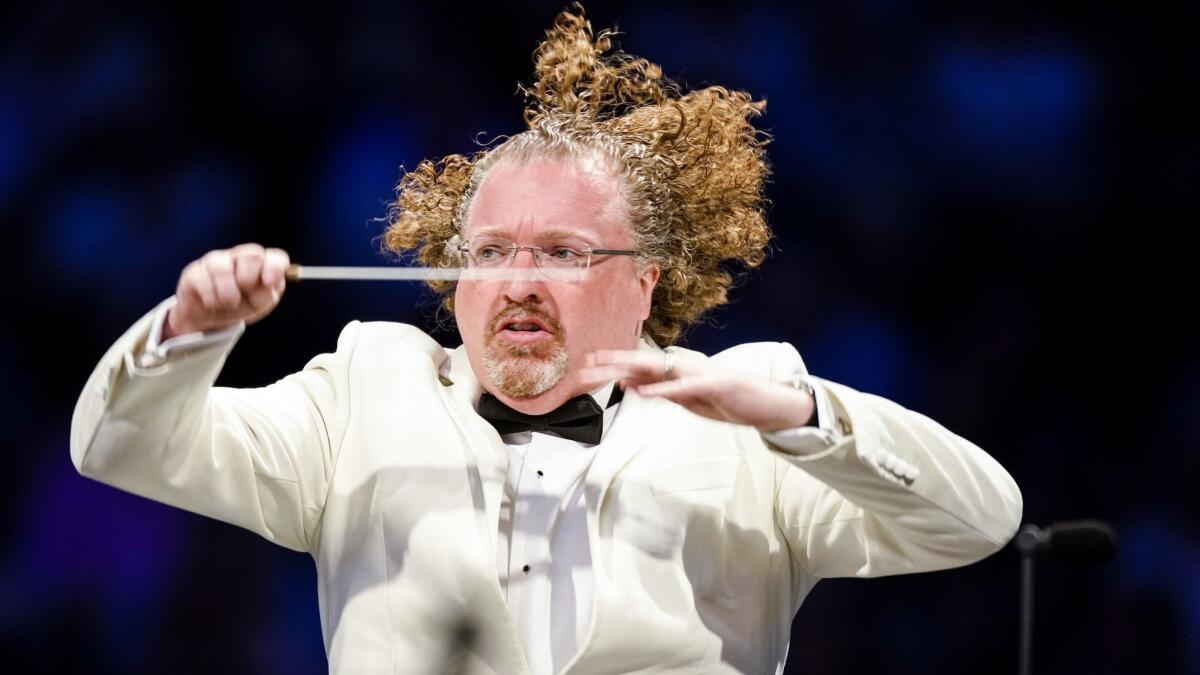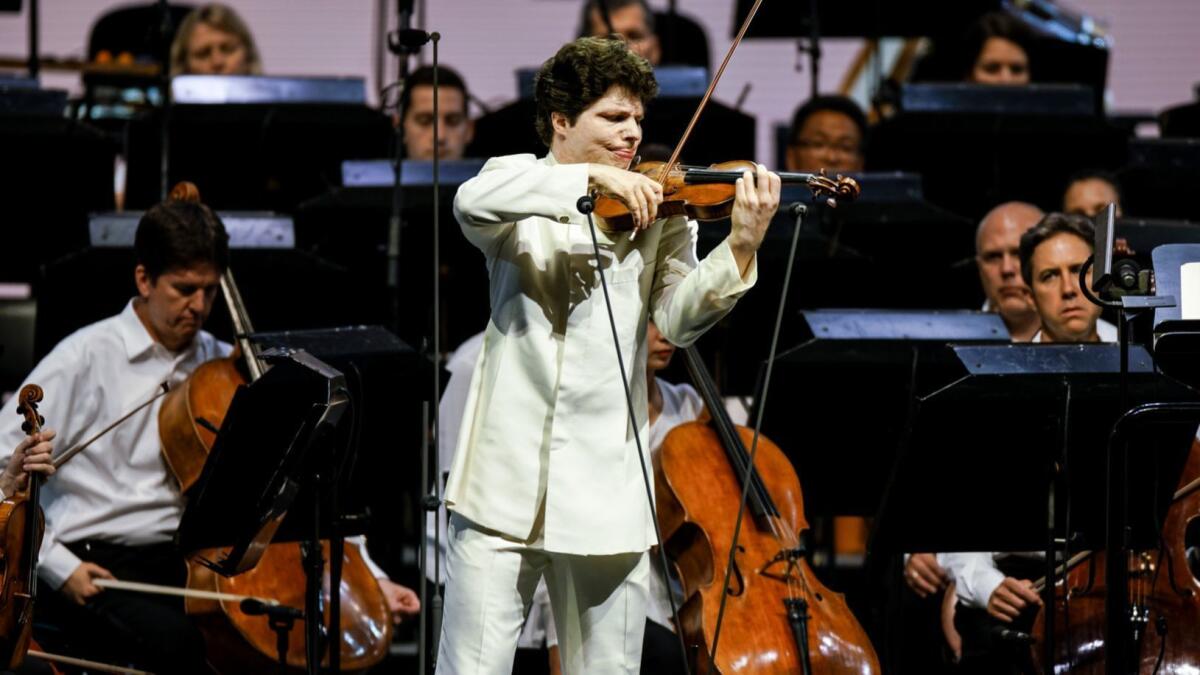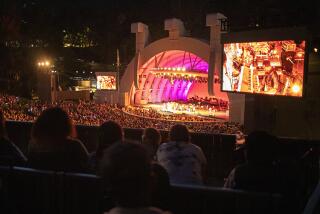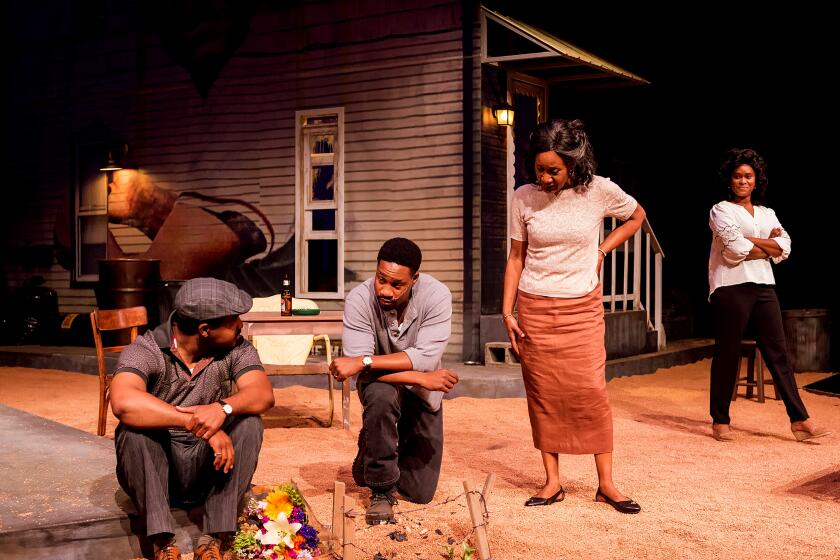Review: ‘Bolero’ at the Hollywood Bowl — a perfect 10?

That was fast.
It’s only the third week of the Los Angeles Philharmonic’s classical concerts at the Hollywood Bowl, and the adventure and ambition feels like it’s pretty much over. With the exception of Gustavo Dudamel’s hastily arranged, mid-August pops-flavored Latin American program, which replaces a much-anticipated performance of “The Nutcracker” by the National Ballet of Cuba (canceled thanks to the federal government’s visa restrictions), the Bowl has nothing of the last half-century other than screenings of “Star Wars” films with live orchestral accompaniment.
It’s an idiosyncrasy of the American summer that we seek exploration in our travels but not our minds, this being the season of popular programming, blockbuster films and escapist literature (unlike in Europe, where the most important summer festivals are places of discovery).
Then again, there is adventure, and there is adventure. A perfect night at the Bowl, and Tuesday had some aspects of being one, can place a listener in the mood for music. What is familiar fare for some, moreover, is for a great many Bowl-goers new and perhaps a discovery of the pleasure of great music. Plus, there are ways of rethinking even “Bolero.”
Before leading his hits-heavy program, which ended with Ravel’s said lascivious orchestral showpiece, French conductor Stéphane Denève looked out at the pastel-colored sky as the sun set, the air sweet and heavy and warm, and told the audience that as beautiful as was this glowing night, it needn’t preclude a hint of darkness.

The theme was loosely the dance, particularly the waltz, and Denève began with a somber one, Sibelius’ “Valse Triste.” That set a moody tone as preface to Sibelius’ Violin Concerto, for which Augustin Hadelich was soloist. In the Ravel second half of the program, two waltz-centered scores preceded “Bolero,” which, though a Spanish dance form, also happens to be in three-four time.
In his remarks, Denève explained that in order to show that the gracious waltz wasn’t, in Ravel’s hands, quite as untroubled as it was for the Viennese, he would play “Valses Nobles et Sentimentales” and “La Valse” without a break, as though they were a single work. The first is a series of eight short dances Ravel wrote in 1911 in an updated Schubertian style, nostalgic yet also contemporary, like, say, an elegant Sacha Guitry French period film of the 1930s. Originally for piano, then exquisitely orchestrated, the dances are not so much waltzes as the memory of waltzes.
In the 1919 “La Valse,” Ravel then turned the Viennese waltz into a more disturbing commemoration of an era obliterated by world war. Sweeping late-19th century suavity becomes increasingly, if also deliciously, decadent until it implodes into 20th-century panic.
Heard against this background, “Bolero,” written nine years later, seems to indicate that what is left from the 19th-century waltz is ravishment. Incessantly repetitious, quietly sinuous, Ravel offers one instrument after another its turn at seduction. Decadence creeps up on the orchestra, as instruments join immodestly. By the climactic end, there is no more effective symphonic exemplification of an orgy, and there is maybe no better place to hear it than the Bowl on a warm summer’s night, the amplification switched on to its saturnalian setting and Denève the picture of ecstasy, his long, curly red hair in vivid enlargement and entanglement on the large video screens.
The performances were alluringly malleable. Denève, who becomes music director of the St. Louis Symphony next year, squeezed orchestral details out as though they were colored paints in tubes. What was meant to be tender was tender. What was meant to be tempestuous was that, too. What was meant to be wild was best.
Sibelius’ beloved concerto is not dance-based, although a critic once likened the last movement to a polonaise for polar bears. That has been repeated so often over the years that it is now a cliché. It did, though, fit here.
In general, the concerto was given an eloquent dark beauty by Hadelich, his tone thickly dusky, his virtuosity so secure that it could be beside the songful point. The amplification was subdued. But in the last movement, with the thumping timpani and strings suddenly enhanced by the new Bowl subwoofers, visions of polar bears weren’t so far away.
Only this was Hollywood, and it was hot. A polar bear bolero was more like it, which is to say a global-warming adventure, whether the unsuspecting bears want it or not.
More to Read
The biggest entertainment stories
Get our big stories about Hollywood, film, television, music, arts, culture and more right in your inbox as soon as they publish.
You may occasionally receive promotional content from the Los Angeles Times.







